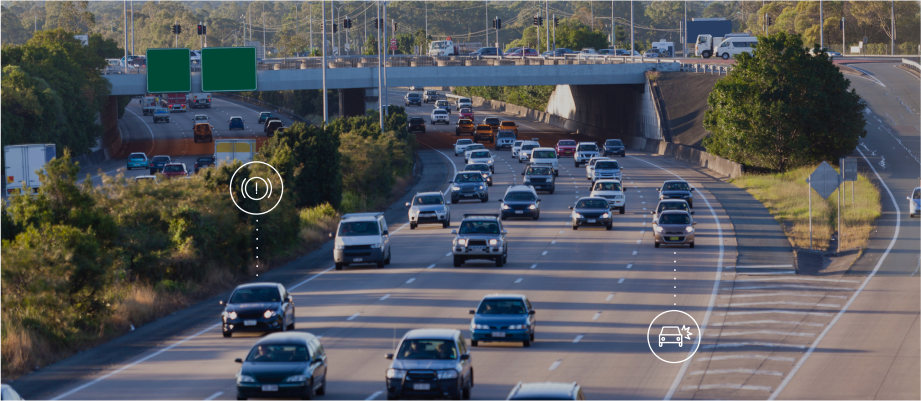How the transportation industry can use collision data to make roads safer

Since the 1960s, traffic deaths had been steadily declining — until the pandemic hit. Although car crashes and injuries due to car crashes declined from 2019 to 2020, there has been a nearly 7 percent increase in fatal car accidents during the same time period. The National Highway Traffic Safety Administration (NHTSA)attributes this increase in deadly collisions to speeding, driving under the influence of alcohol, and failure to use a seatbelt.
On the bright side, the data we have on collisions can help us prevent them. In the short term, collision data can help us detect and respond to collisions. And in the long term, collision data can help the transportation industry build solutions for safer roads.
The short-term approach: Using collision data to detect accidents
Every moment matters when a collision occurs. If you rely on bystanders or those involved in the accident to contact emergency services, you could lose crucial time providing emergency assistance.
The solution? By leveraging collision data and data science, Arity developed Crash Detection — an SDK mobile app publishers can use to sense when a collision has occurred and immediately dispatch emergency services.
We’ve worked with businesses like Life360 to help detect collisions within their app, allowing them to immediately deploy emergency responders to the accident location. Taking signals from your phone’s sensor and relying on a unique algorithm, Crash Detection can:
- Alert emergency services that a crash has occurred
- Notify friends, family, and key contacts after a collision
- Initiate and streamline the insurance claims process
- Provide a quick-response solution in rural areas where assistance might be far away
The long-term approach: Using collision data to prevent dangerous driving
As the transportation industry grapples with the increase in erratic driving, collision data allows us to make strategic, informed decisions about the future of our roads.
Developing a roadmap for safer driving conditions goes beyond crash detection. Long-term solutions are necessary to address the rise in fatal accidents while working to reduce their prevalence. The transportation industry can leverage collision data to make the roads safer. How?
- Road planning: Collision data provides information on where and when drivers will likely get in an accident. Meanwhile, mobility data offers a comprehensive picture of factors that play into collisions — like vehicle speed and road congestion. Public officials and private enterprises can rely on this dataset combination to create sustainable safety changes that last.
For instance, civil engineers can leverage this data to inform road planning decisions, from infrastructure changes to congestion pricing. These improvements could particularly help pedestrians, whose fatalities have increased by nearly 4% from 2019 to 2020, the highest fatality rate since 1989.
- Insurance safety programs: Anonymized mobility data provides insurers with information on driving behaviors that commonly result in collisions such as speeding or distracted driving. This makes it easier for insurers to provide real-time feedback and disincentivize risky driving behaviors with higher policy pricing.
- Vehicle manufacturers: Collision data can inform auto manufacturers about safety features and driver-assist functionalities to help prevent unsafe road behavior. Additionally, with a yearly surge in vehicles on the road containing self-driving functionality, automakers can leverage data to develop safer “smart cars.”
Access decades of data collection with Arity
As the transportation industry grapples with the increase in erratic driving, collision data allows us to make strategic, informed decisions about the future of our roads.
Arity captures over one billion miles per day across on-board diagnostics (OBD-II) devices, mobile sources, original equipment manufacturer (OEM), and other sensor types. With smart solutions driven by anonymized driving data, we can use past collisions to detect, predict, and prevent accidents.
Learn more about how Arity is leveraging driving data to make the roads safer.